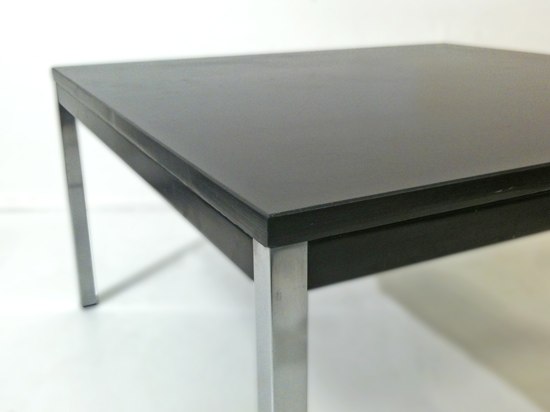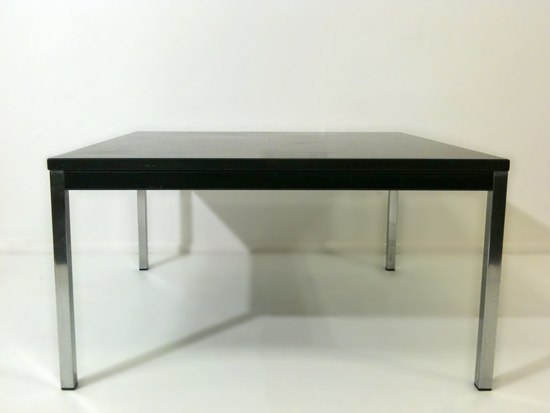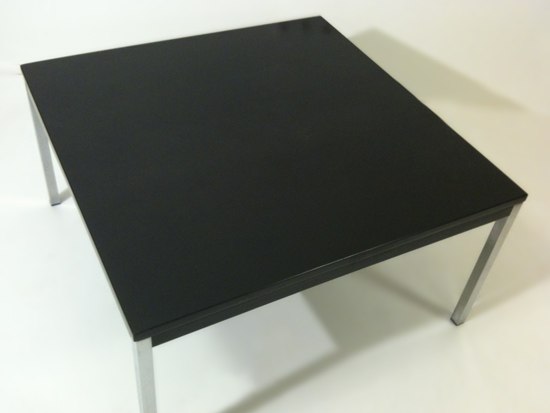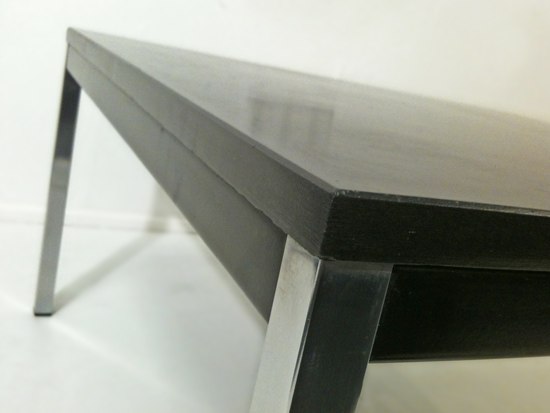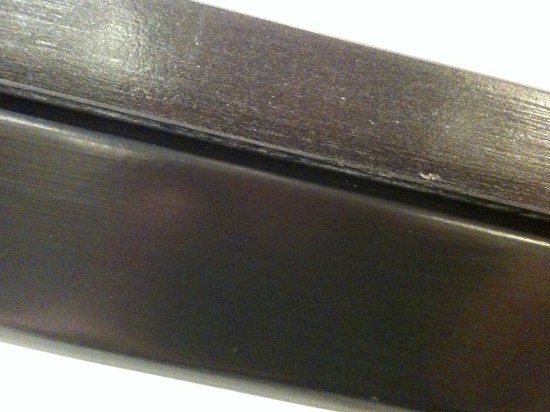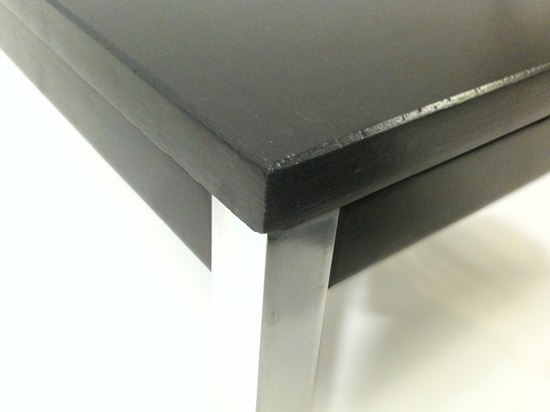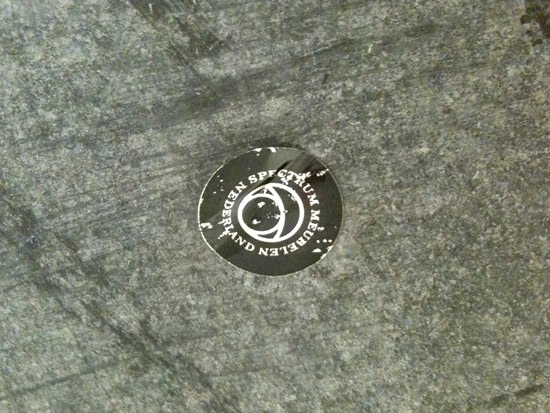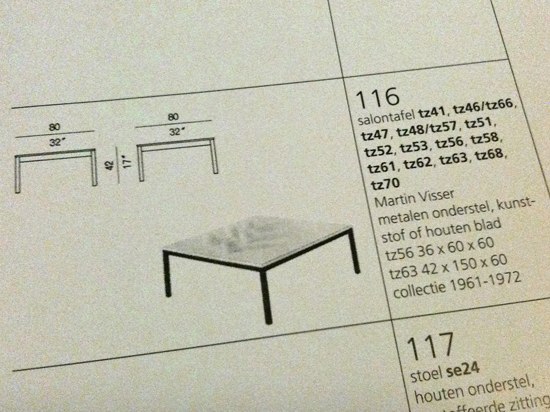Martin Visser (Papendrecht, 26 januari 1922 - Bergeijk, 23 oktober 2009) studied Civil Engineering at Technical School. Later he worked as an architectural draughtsman, designing his first furniture for a friend. He worked in the furniture department in De Bijenkorf, the famed department store in Amsterdam. Through his work for De Bijenkorf, Visser came into contact with De Ploeg Weavers and ‘t Spectrum, and was asked by Spectrum to work for them as designer and head of collection in 1954.
Since the end of the ‘fifties, Martin Visser’s functional design approach has determined the look of the Spectrum collection. Developments in his furniture designs then ran parallel with the spirit of the collection (settee BR 02.7, armchairs SZ 01 and SZ 02, dining chairs SE 05, SE 06 and SE 07 and table TE 06.7).
Visser has a strong preference for craft-built furniture. Many of his designs have an industrial style, but are usually craft made. He also stretches techniques to the limit; he loves to make what is almost impossible! An example of this is that he does not bend the tubing, but cuts and welds it. Honest use of materials, simple construction and absence of decoration give the impression that Visser has a great admiration for Berlage and pre-war functionalism. He loves to make simple furniture using as little material as possible but with the clearest possible shapes.
In the ‘60s, his furniture became less austere and looked more solid, with greater volume and comfort.
source: www.spectrumdesign.nl






